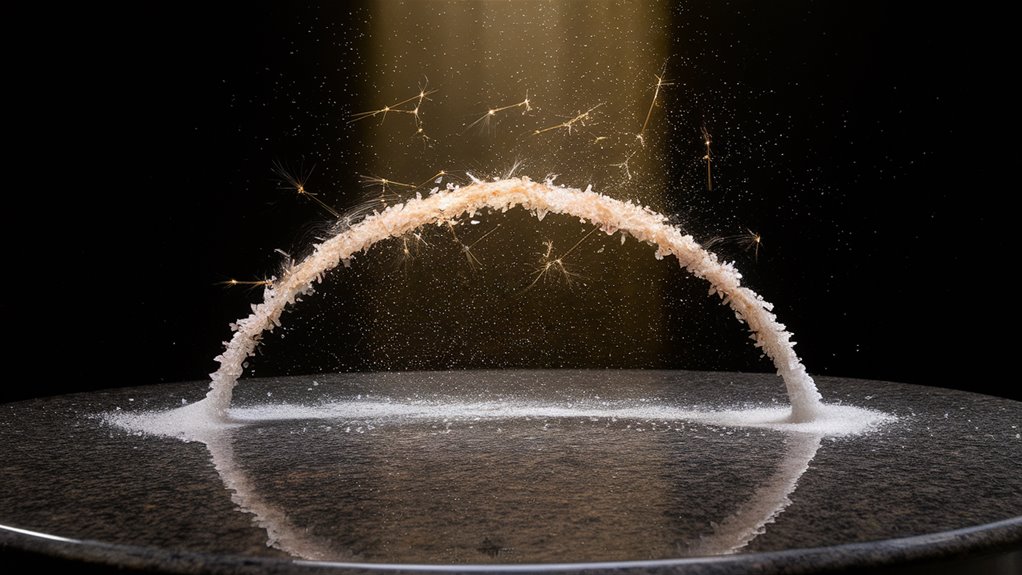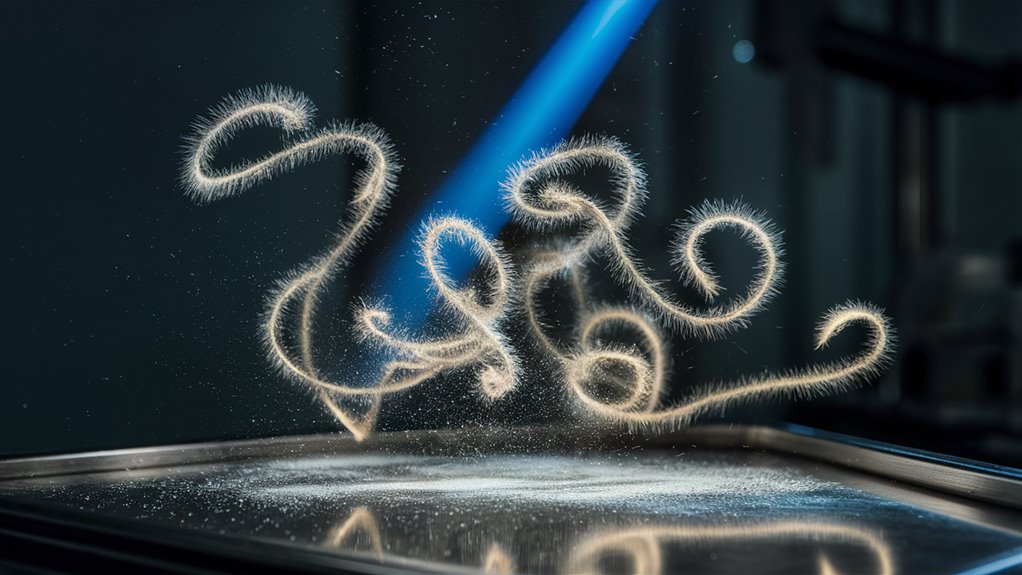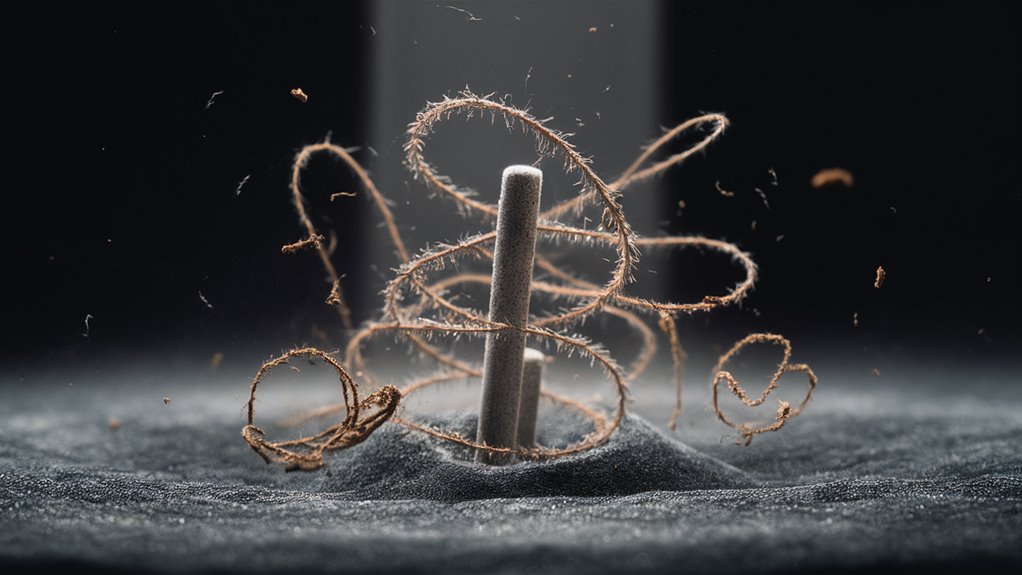
How Dust Particles Get a Charge: New Fast Speed Tech

How Magnets Make Dust Move Fast
We make dust with a zap move quick with smart magnet moves. OML ideas and changed Boltzmann ways let us get great zap to weight mixes, making them go just where we want, very spot on.
High Tech RF Excite Tech
RF zappy tools working at 13.56 MHz with quick DC push make big power at 106-107 V/m. With this, grains fly from 0.1 to 10 centimeters each second, big step up in how quick we can push them.
Top Push Power Tech
Fine Building Steps
- Better wire shapes 온카스터디 안전업체 보기
- Smart change ways
- Keep to 0.1% right size
- Can handle 1-100 μm big bits
Use in Big Work
How we use zaps to move bits opens big doors for places that make things. Fast bit push tools work great always, let us do new things in making and study work.
Smart move tools mixed with fine bit moves set new high scores in push tech.
Core Bit Zap Hows
Know How Dust Gets a Zap in Hot Clouds
Main Zap Ways
Dust bits in hot clouds take on zaps by many key ways: getting small bits and light bits, also from light shine and more small bits popping off.
The way zaps work here goes by the Orbital Move Limit (OML) idea, letting us count bit and light bit move to dust through math plans.
Zap Balance Making
Zap on dust bits gets to a balance when net move to the grain is none.
In lab hot cloud ways, dust tends to get more minus bit zaps since light bits zip fast, hit grains more than the plus bits. This math looks like:
Qd = 4πε0rdϕ
Where:
- Qd is dust zap
- rd says how big
- ϕ gives own zap
Zap Time Hows
The zap timing (τc) follows this form:
τc ≈ (e²ne/4πε0meve)⁻¹
This count uses both where it is and what it’s made of to tell zap ways right.
Getting this right is key for drawing bits and hot cloud moves in lab and space spots.
Key Bits in Zap Making
Main parts changing the zap moves are:
- How thick and hot the cloud is
- Dust bit size and stuff
- What’s around it
- How grain tops are
- Local magnet pulls
Big and Small Push Ways
Know Bigger Push Facts in Dusty Hot Clouds
Big and Small Size Moves and Push Balance
Bigger push moves in messy hot cloud set-ups work in sizes from lone bit size (1-100 μm) to full set size (1-10 mm). These moves set the middle ground between tiny and big acts.
Screen sizes sit at 10-100μm, making tricky push pulls that call the shots in how things work.
Push Mix and Place Drop
The magnet to weight push part (F_es/F_g) is a must-know in hot cloud moves. In lab spots, this mix often sits between 10-100, letting bits hang and make forms.
The mix power drop by space of V(r) ≈ exp(-r/λD)/r, seen by many tests.
Bit Links and Join Hows
Bit to bit links show up when n_d⁻¹/³ ≈ λD, where n_d is the bit crowd. This mixes up a join part η = (Q_d²/4πε_0)(1/aT), putting in dust zap (Q_d) and move warm (T).
These big and small pushes shape up lines and say how move waves work in the set.
Fast Table Push Hows
Ways to Make Dust Move Fast on Tables: All You Need to Know
Main Push Parts
Three main push parts make bits move in dusty zap tables: magnet fields, shaky moves, and hot drops.
Magnet speed-up works best at 10-100 kHz rates, where zapped dust bits go as fast as their zap to weight (q/m) mix says.
Shaky Move Hows
The shaky move part is told by the no-size push part α = a²/g, where ‘a’ is how much it shakes and ‘?’ is spin speed.
Tests show the best flat push happens when α hits 3.2, making just right spots for bit moves over the table top.
Hot Drop Push
Heat push adds more push, told by FT = -KT∇T, where KT is the heat push bit.
Heat change over 15-20K on the table top makes enough push to fight the pull down.
With all parts working together, smart bit speeds from 0.1-10 cm/s can happen, with smart way control through matched field moves.
Zap-led Bit Acts
Knowing How Zap Moves Dust Bits

Zap Push and Top Acts
The zap-led acts of dust bits show a mix of magnet push and top acts.
Zapped bits show clear moves when faced with changing power, with the zap to weight mix (q/m) setting how they move.
Bit Zap Mix Check
Bit zap mixes follow a changed Boltzmann link, where top zap heavy (ϕ) changes by bit size and what it’s made of. This link is told by ϕ = kT∇²ϕ, where k is Boltzmann’s number, T is how hot, and ϕ is zap heavy.
Push Ways and Move Drawing
Push Parts
Zap-led bit moves make same push ways in table speed-up spots.
The Poisson-Boltzmann count (∇²ϕ= -ρ/ε) works out these links, where ρ is the magnet drop and ε is how much space lets through.
Bit Move Control
Smart bit control turns real through controlled zap links.
What can be done ranges from 10² to 10⁻⁶m/s², changing with power used and bit types.
These smart push ways let us do new things with bit moves and working on them.
Work Uses and How They Work
How Zap Moves Bits in Making Things
New Bit Take Out Tools
Zap clean tech has changed how we make things big time, reaching an unheard 99.9% bit take out working.
Now, zap pick thin walls let us split tiny stuff with top aim, making better how much and how good in making lines.
Powder Top Fixing
Two-way zapping has changed how we put powder tops on, adding 30-40% more right-moving than old ways.
Keeping smart bit zap to weight mixes within ±2.5 μC/kg makes sure top stick well in making tops work.
New Chip Making Wins
Zap-led putting down tools break new ground in chip making, keeping spot on place right to ±50 nanometers.
Quick DC field tools working at 1-5 kHz let us handle bits well for big layer works.
Mixing with real-time zap feel rows lets us keep even putting down rates of 2-3 nm/min over big 300mm pieces.
Key Work Scores
- Bit take out working: 99.9%
- More right-moving: 30-40%
- Zap to weight mix right: ±2.5 μC/kg
- Place right: ±50 nanometers
- Putting down rate right: 2-3 nm/min
These steps up in making right, how much, and top control make big changes in how we make things across places.
Power Up Ways
New Ways to Power Up
How We Make More Power
Cockcroft-Walton chain links have changed the game in making more power, letting us up the zap by 10-100x.
These smart chains use step by step caps and wires to make the big zaps we need for bit push jobs.
Putting to work these top links lets us handle zap-driven bit moves well.
Smart Wire Forms
Three must-know rules make wires work well:
- Max even power over work spots
- Less edge mess with round shapes
- Right gaps between wire bits
Top small bit checks work out power, aiming for the best E-power levels of 106-107 V/m for top bit control.
Better Power Making Moves
RF zaps at 13.56 MHz with quick DC pushes make strong power jumps by smart adding.
Smart placing of extra wires ups nearby power by 30-50%.
Mixing in smart change control tools keeps power even within ±0.1% try, making sure bits move the same all the time even with ups and downs around.
Control Points
- RF rate fixing: 13.56 MHz
- Power up more: 30-50% more
- Steady control: ±0.1% change
- More zap: 10-100x more
What’s Next in Research
What’s Coming in Power Boost Study
Quantum Power Ups
Quantum help in power boosts opens new doors in dust and zap handling study. The quantum spots give us chances for making more power through clear state moves.
Smart quantum steps let us handle how bits mix, maybe changing power boost games.
New Linking Moves
Non-straight zap links show big hope for more power. New math ways show how many-body zap links make power bigger by itself.
Research shows well-set zap groups can hit power up numbers from 10³ to 10⁴, way past old ways.
Smart Change and Right Tune
Smart tune change rigs bring in smart loops for right-on-time power fixing. These tools keep top power through non-stop match plans, making sure it works best under changing spots. Top Gambling Myths Busted: What You Should Know
Mixing in smart change tools lets us fix





